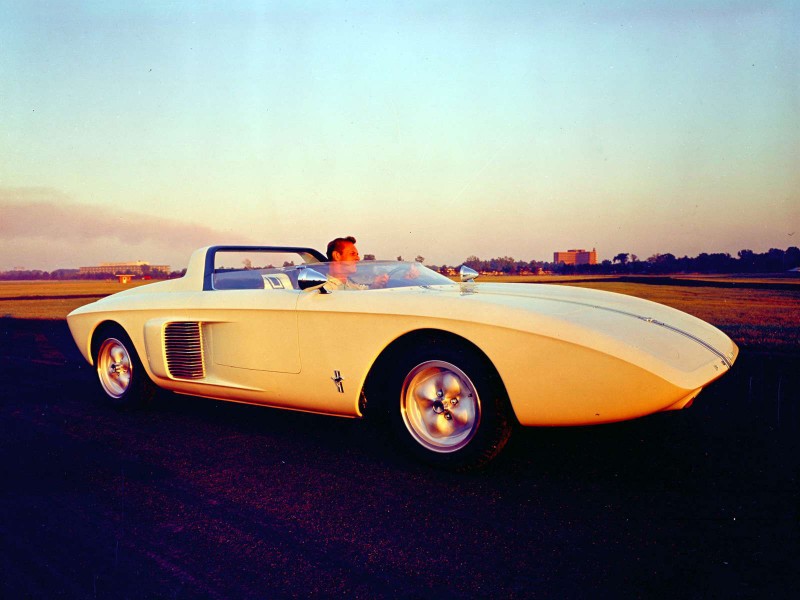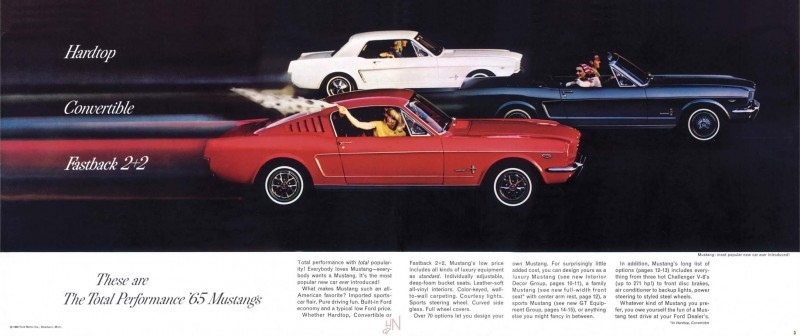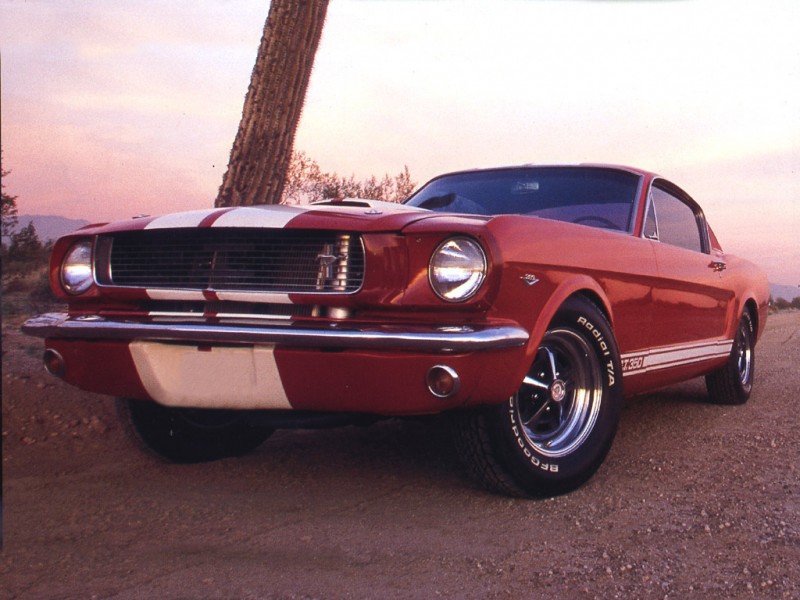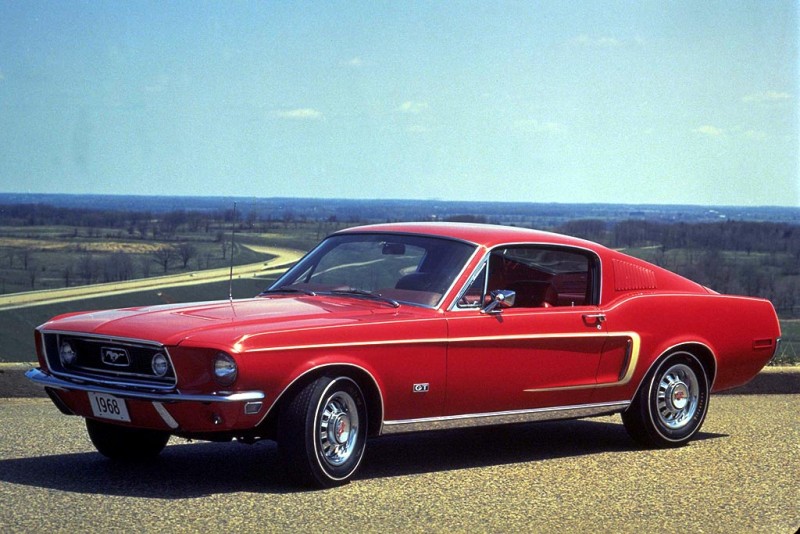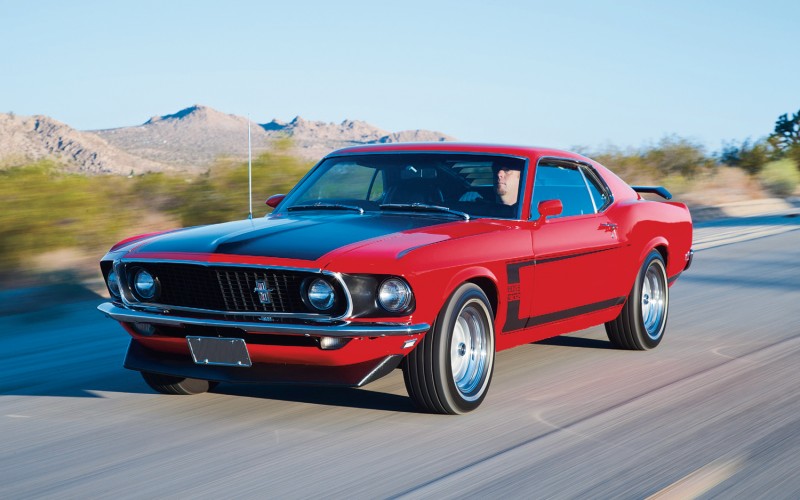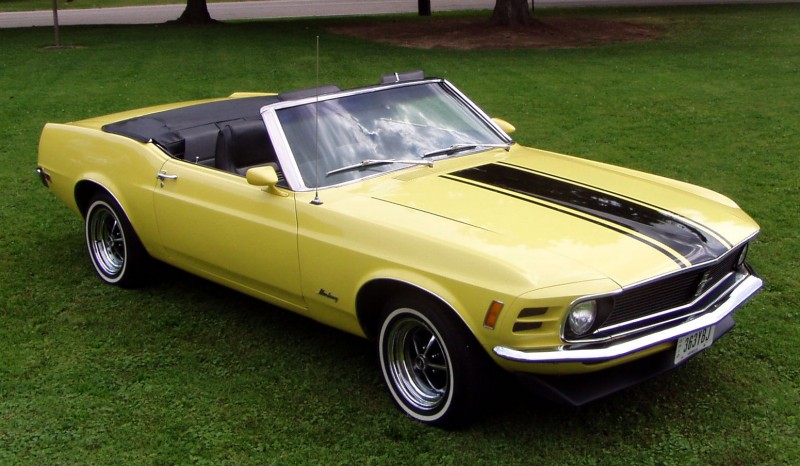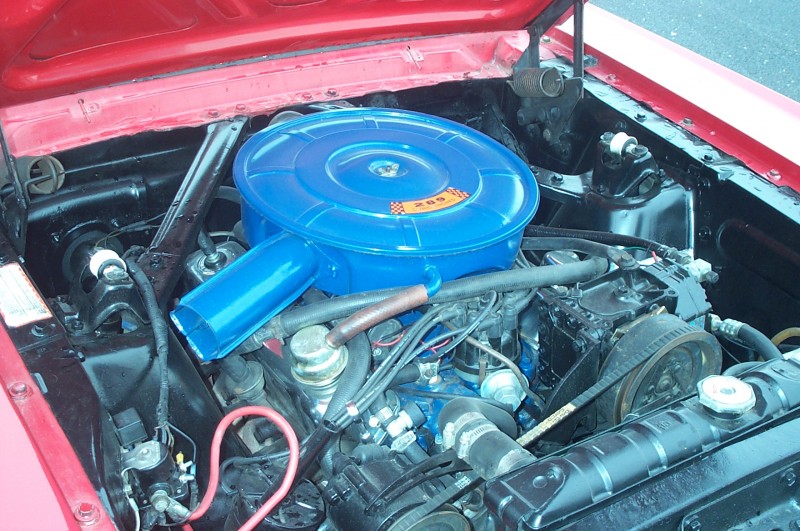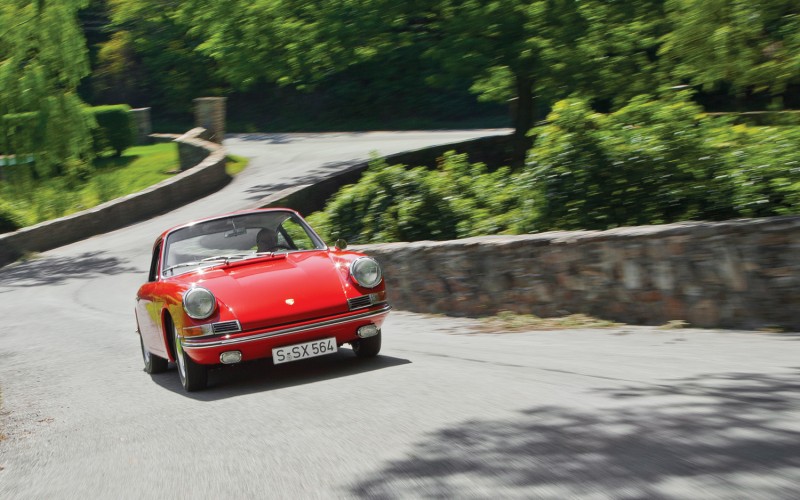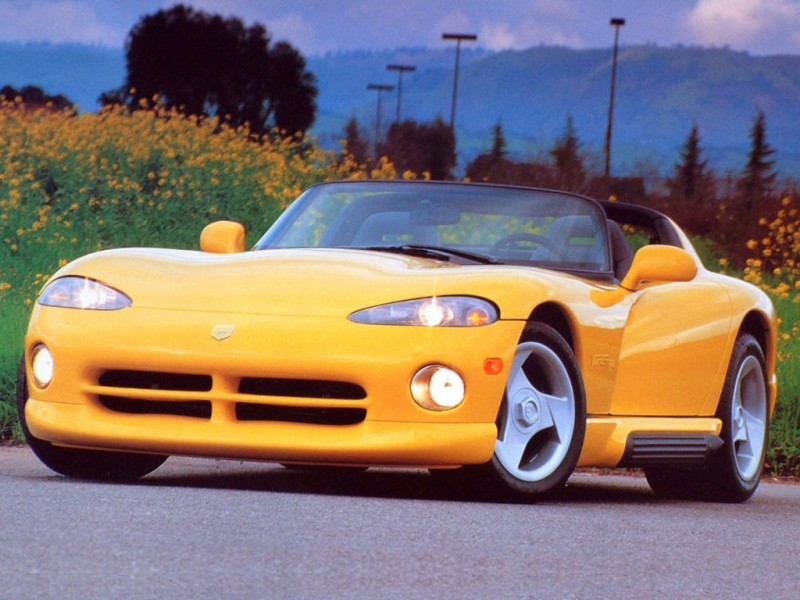Synonymous with America, the Mustang, more than any other car in the country’s history, represents their middle-class and love for being nostalgic about the 1960s. It is the sports car of the every-man, heralded for its versatility and performance at affordable prices. From conception, this was always the intent of the Mustang and sales have shown that Ford made the smart move.
The Design Dream
Lee Iacocca envisioned the basis of the car in 1961. By 1962 a concept car with two seats and a mid-mounted V4 was shown to the public. This would ultimately be radically different from the final production car that was heavily based on the 1964 Ford Falcon platform. The shared platform would be the key to keeping the Mustang at an affordable price point for buyers. From the Falcon were the entire chassis, suspension, driveline, and most of the interior pieces.
Stampede to Stardom
When the car went on sale, in 1964, it was literally an overnight success. Ford dealerships were inundated with clients looking to buy a Mustang “Designed by you”, as the marketing slogan went, the day after its first commercial aired. This always was another crucial piece to the Mustang’s success: customization.
Immediately available to consumers were long options lists including several motor choices (4), three different transmissions, two body styles (coupe & convertible), different rear-end ratios, steering wheels, shift knobs, carpeting, seats, and much more! By the end of its second year, 1965, the Mustang had already sold over one million units, marking it down as Ford’s most successful car release since the Model A.
Shelby Crafts a Legacy
1965 marked an important point in Ford, and automotive, history when Texan Carroll Shelby took 100 new “Fastback” Mustangs, with the largest V8, and tuned them to be Shelby GT350’s. A famous partnership was born when the cars proved monstrously fast on the track and streets. Upgrades included modified engines that produced over 300hp, suspension tuning, a lightweight hood, and beefy tires. Shelby would eventually remove himself from Ford and the GT40 program in 1969 and would not return until decades later.
From 1967 to 1968 the Mustang grew-up but not in noticeable performance. The car was enlarged, and body styling was altered, in all only cosmetic differences separated the years. Worth noting is that in 1968 Ford produced the now famous California Special edition.
The Stud of the Stable
The real noise from Ford arrived in 1969 with the Boss 302 and 429 motors. These fire-breathing track stars were designed to homologate the Mustang into the SCCA’s Trans-Am series but became just as popular on the street as the track. This was also a significant refresh year for the Mustang, featuring the most aggressive styling of the first generation Mustangs. Quad headlights, a pronounced hood, wider front & rear panels all added together to produce a mean-looking stallion.
The Descent
Unfortunately, the Mustang peaked in 1969. By the 1970 model year, Ford had undone everything that made the 1969 stand out. The aggressive styling was quelled, quad headlights lost, vents deleted, and the Mustang began its slow descent into complacency for the remaining years. Iacocca is quoted as saying “The Mustang market never left us, we left it.”
And leave they did because by 1971 there was yet another major refresh to the car. It brought with it a very flat, elongated styling; a much longer overall length; and gained considerable weight. There was yet another major refresh to the car. It brought with it very flat, long styling, a much longer overall length, and gained considerable weight.
Put to Pasture
With a new model (the Mustang II) set to release the next year, the 1973 Mustang brought only minor cosmetic changes. Sales in these last few years slumped drastically; compared to the 1960’s models.
Ford hoped that this would turn around with their new Mustang, but emissions requirements hit in 1973 and took a hard toll on Mustang performance, which would last through the next decade of the Mustang’s life.
In all, the Mustang revolutionized the sports car world in America. It was more widely available than the Corvette, cheaper than any European competitors, and would make Chevrolet and Dodge introduce cars to combat it. That is why the Mustang will always be the American people’s sports car.
Specifications
- Years: 1964 (1/2) – 1973
- Layout – Front mounted
- Drive – RWD
- Body Style – Convertible, Coupe, Fastback
- Seating – 2+2
- Motor – I6, V8
- Displacement – 2.8 to 7.0L (170 cu – 429 cu)
- Power (hp) – 88 – 375 hp
- Torque (lbs-ft) – 156 – 440 lb-ft
- Transmission – 3-speed, 4-speed, 3-speed automatic
- Wheelbase – 2743 mm / 108 in to 2769 mm / 109 in
- Weight – 1162 kg / 2562 lbs to 1594 kg / 3514 lbs
- 0-60 mph – 15.5 to 6.2 seconds
- Quarter-mile – 19.6 to 14.6 seconds
- Top Speed – 94 to 131 mph

![FORD MUSTANG (GEN. 1): [Insert Pony Pun Here]](https://motoringhistory.com/wp-content/uploads/2015/11/mustang.jpg)
